Related Research Articles

The National American Woman Suffrage Association (NAWSA) was an organization formed on February 18, 1890, to advocate in favor of women's suffrage in the United States. It was created by the merger of two existing organizations, the National Woman Suffrage Association (NWSA) and the American Woman Suffrage Association (AWSA). Its membership, which was about seven thousand at the time it was formed, eventually increased to two million, making it the largest voluntary organization in the nation. It played a pivotal role in the passing of the Nineteenth Amendment to the United States Constitution, which in 1920 guaranteed women's right to vote.
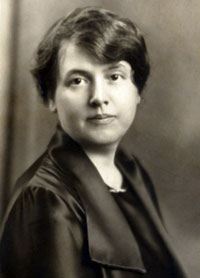
Minnie Fisher Cunningham was an American suffrage politician, who was the first executive secretary of the League of Women Voters and who worked for the passage of the Nineteenth Amendment to the United States Constitution giving women the vote. A political worker with liberal views, she became one of the founding members of the Woman's National Democratic Club. In her position overseeing the club's finances, she helped the organization purchase of its Washington, D.C. headquarters, which is still in use.

The Minnesota Woman Suffrage Association (MWSA) was an organization devoted to women's suffrage in Minnesota. From 1881 to 1920, the organization struggled to secure women's right to vote. Its members organized marches, wrote petitions and letters, gathered signatures, gave speeches, and published pamphlets and broadsheets to force the Minnesota Legislature to recognize their right to vote. Due to their efforts, the legislature approved the Nineteenth Amendment in 1919.

Women's suffrage in states of the United States refers to women's right to vote in individual states of that country. Suffrage was established on a full or partial basis by various towns, counties, states and territories during the latter decades of the 19th century and early part of the 20th century. As women received the right to vote in some places, they began running for public office and gaining positions as school board members, county clerks, state legislators, judges, and, in the case of Jeannette Rankin, as a Member of Congress.
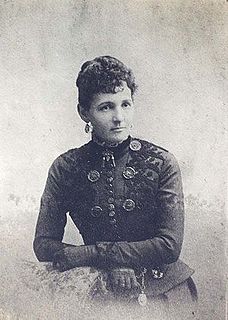
Mary Ellen Lawson Dabbs was a Texas physician, women's rights activist and writer. Dabbs was an advocate of women's suffrage and of the temperance movement. She was an officer in the Texas Equal Rights Association (TERA). Dabbs also believed that African American women deserved the right to vote in the same manner as white women.

The Texas Equal Suffrage Association (TESA) was an organization founded in 1903 to support white women's suffrage in Texas. It was originally formed under the name of the Texas Woman Suffrage Association (TWSA) and later renamed in 1916. TESA did allow men to join. TESA did not allow black women as members, because at the time to do so would have been "political suicide." The El Paso Colored Woman's Club applied for TESA membership in 1918, but the issue was deflected and ended up going nowhere. TESA focused most of their efforts on securing the passage of the federal amendment for women's right to vote. The organization also became the state chapter of the National American Woman Suffrage Association (NAWSA). After women earned the right to vote, TESA reformed as the Texas League of Women Voters.
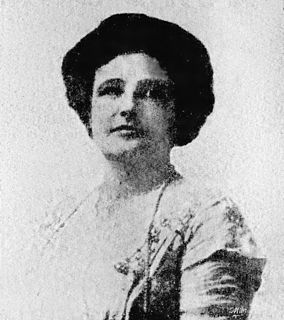
Florence Terry Griswold was an American cattlewoman and rancher from Texas. She was the first woman delegate of the Texas Cattle Raisers Association to attend the Trans-Mississippi Convention and for several years, the only woman delegate. A staunch supporter of women's equality, she worked as a suffragist, served as a Republican National Convention Delegate for many years and later fought for equal pay for women. She is most known as the founder of the Pan-American Round Tables in 1916, which has grown from a single club begun in San Antonio, Texas, to an international NGO with over 1400 branches.
Mariana Thompson Folsom was an American suffragist and a Universalist minister.

Women's suffrage in Virginia was granted in 1920, with the ratification of the Nineteenth Amendment. The General Assembly, Virginia's governing legislative body, did not ratify the Nineteenth Amendment until 1952. The argument for women's suffrage in Virginia began in 1870, but it did not gain traction until 1909 with the founding of the Equal Suffrage League of Virginia. Between 1912 and 1916, Virginia's suffragists would bring the issue of women's voting rights to the floor of the General Assembly three times, petitioning for an amendment to the state constitution giving women the right to vote; they were defeated each time. During this period, the Equal Suffrage League of Virginia and its fellow Virginia suffragists fought against a strong anti-suffragist movement that tapped into conservative, post-Civil War values on the role of women, as well as racial fears. After achieving suffrage in August 1920, over 13,000 women registered within one month to vote for the first time in the 1920 United States presidential election.

Maud E. Craig Sampson Williams was an American suffragist, teacher, civil rights leader, and community activist in El Paso, Texas. In June 1918, she formed the El Paso Negro Woman's Civic and Equal Franchise League and requested membership in the National American Woman Suffrage Association (NAWSA) through the Texas Equal Suffrage Association (TESA), but was denied. Williams organized African-American women to register and vote in the Texas Democratic Party primary in July 1918. She was one of the founders and a charter member of the El Paso chapter of the NAACP, which was the first chapter in the state of Texas. Williams served as the vice president of the El Paso chapter from 1917 to 1924 and remained active in the NAACP until her death. Williams played a significant role in the desegregation of Texas Western College in 1955, which was the first undergraduate university in Texas to be desegregated.
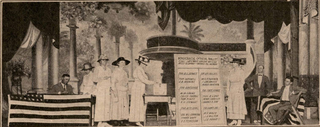
Women's suffrage in Texas was a long term fight starting in 1868 at the first Texas Constitutional Convention. In both Constitutional Conventions and subsequent legislative sessions, efforts to provide women the right to vote were introduced, only to be defeated. Early Texas suffragists such as Martha Goodwin Tunstall and Mariana Thompson Folsom worked with national suffrage groups in the 1870s and 1880s. It wasn't until 1893 and the creation of the Texas Equal Rights Association (TERA) by Rebecca Henry Hayes of Galveston that Texas had a statewide women's suffrage organization. Members of TERA lobbied politicians and political party conventions on women's suffrage. Due to an eventual lack of interest and funding, TERA was inactive by 1898. In 1903, women's suffrage organizing was revived by Annette Finnigan and her sisters. These women created the Texas Equal Suffrage Association (TESA) in Houston in 1903. TESA sponsored women's suffrage speakers and testified on women's suffrage in front of the Texas Legislature. In 1908 and 1912, speaking tours by Anna Howard Shaw helped further renew interest in women's suffrage in Texas. TESA grew in size and suffragists organized more public events, including Suffrage Day at the Texas State Fair. By 1915, more and more women in Texas were supporting women's suffrage. The Texas Federation of Women's Clubs officially supported women's suffrage in 1915. Also that year, anti-suffrage opponents started to speak out against women's suffrage and in 1916, organized the Texas Association Opposed to Woman Suffrage (TAOWS). TESA, under the political leadership of Minnie Fisher Cunningham and with the support of Governor William P. Hobby, suffragists began to make further gains in achieving their goals. In 1918, women achieved the right to vote in Texas primary elections. During the registration drive, 386,000 Texas women signed up during a 17-day period. An attempt to modify the Texas Constitution by voter referendum failed in May 1919, but in June 1919, the United States Congress passed the Nineteenth Amendment. Texas became the ninth state and the first Southern state to ratify the Nineteenth Amendment on June 28, 1919. This allowed white women to vote, but African American women still had trouble voting, with many turned away, depending on their communities. In 1923, Texas created white primaries, excluding all Black people from voting in the primary elections. The white primaries were overturned in 1944 and in 1964, Texas's poll tax was abolished. In 1965, the Voting Rights Act was passed, promising that all people in Texas had the right to vote, regardless of race or gender.
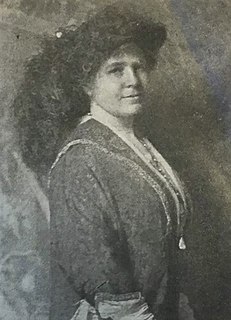
Elise Clay Bennett Smith, President of the Kentucky Equal Rights Association from 1915–1916, also served as an Executive Committee member for the National American Woman Suffrage Association. Her last name changed several times as she married three men in succession: from her birth surname of Bennett she became Smith, then Jefferson, and finally Gagliardini.
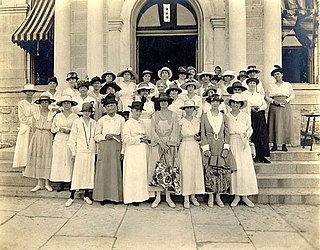
This is a timeline of women's suffrage in Texas. Women's suffrage was brought up in Texas at the first state constitutional convention, which began in 1868. However, there was a lack of support for the proposal at the time to enfranchise women. Women continued to fight for the right to vote in the state. In 1918, women gained the right to vote in Texas primary elections. The Texas legislature ratified the 19th amendment on June 28, 1919, becoming the ninth state and the first Southern state to ratify the amendment. While white women had secured the vote, Black women still struggled to vote in Texas. In 1944, white primaries were declared unconstitutional. Poll taxes were outlawed in 1964 and the Voting Rights Act was passed in 1965, fully enfranchising Black women voters.

This is a timeline of women's suffrage in Montana. The fight for women's suffrage in Montana started early, before Montana became a state. In 1887, women gained the right to vote in school board elections and on tax issues. Women fought for full, equal suffrage in the subsequent years, eventually culminating in a year-long campaign in 1914, when they became one of eleven states with equal voting rights for most women. Montana ratified the Nineteenth Amendment on August 2, 1919 and was the thirteenth state to ratify. Native American women voters did not have equal rights to vote until 1924.

This is a timeline of women's suffrage in Hawaii. Hawaii went through a transition where it was first the Kingdom of Hawaii, then a political coup overthrew Queen Liliʻuokalani in 1893. Women were not allowed to vote and lost political power in the provisional government. In the same year as the coup, Wilhelmina Kekelaokalaninui Widemann Dowsett and Emma Kaili Metcalf Beckley Nakuina began to make plans to support women's suffrage efforts. When Hawaii was annexed, members of the National American Woman Suffrage Association (NAWSA) advocated for women's suffrage for the territory. In 1912, Dowsett and a diverse group of women created the National Women's Equal Suffrage Association of Hawai'i (WESAH). In 1915 and 1916 Prince Jonah Kūhiō Kalanianaʻole brought women's suffrage petitions to the United States Congress, but no action was taken. In 1919, suffragists from WESAH fought for women's suffrage in the territorial legislature, but were also unsuccessful. Women in Hawaii gained the right to vote when the Nineteenth Amendment became part of the United States Constitution on August 26, 1920.

Women's suffrage in Colorado had an early victory, being the second state to grant women's suffrage and the first to do so through a voter referendum in 1893. Even while Colorado was a territory, lawmakers and other leaders tried to include women's suffrage in laws and later in the state constitution. The constitution did give women the right to vote in school board elections. The first voter referendum campaign was held in 1877. The Woman Suffrage Association of Colorado worked to encourage people to vote yes. Nationally-known suffragists, such as Susan B. Anthony and Lucy Stone spoke alongside Colorado's own Alida Avery around the state. Despite the efforts to influence voters, the referendum failed. Suffragists continued to grow support for women's right to vote. They exercised their right to vote in school board elections and ran for office. In 1893, another campaign for women's suffrage took place. Both Black and white suffragists worked to influence voters, gave speeches, and turned out on election day in a last-minute push. The effort was successful and women earned equal suffrage. After gaining the right to vote, Colorado women continued to fight for suffrage in other states. Some women became members of the Congressional Union (CU) and pushed for a federal suffrage amendment. Colorado women also used their right to vote to pass reforms in the state and to support women candidates. Despite the early wins for most women in Colorado, many Native American women were unable to exercise their rights until 1970, and for members of the Ute tribe, well into the 90s.
References
- ↑ "Jane McCallum and the Suffrage Movement". Austin History. Austin Public Library. Retrieved 26 May 2016.
- 1 2 "Women's Movement". The Galveston Daily News. 6 August 1894. Retrieved 26 May 2016– via Newspapers.com.
- ↑ "Equal Rights Association". The Galveston Daily News. 28 May 1893. Retrieved 26 May 2016– via Newspapers.com.
- 1 2 3 4 5 6 7 McArthur, Judith N. (June 15, 2010). "Texas Equal Rights Association". Handbook of Texas Online. Texas State Historical Association. Retrieved May 26, 2016.
- 1 2 Enstam 1998, p. 97.
- 1 2 Brandenburg, Katie (May 10, 2010). "Today in Texas History: Suffrage Group Forms". The Houston Chronicle. Retrieved May 26, 2016.
- ↑ McArthur 1998, p. 97.
- ↑ McArthur 1998, p. 12.
- ↑ "Woman's Rights Association". The Galveston Daily News. 18 October 1893. Retrieved 26 May 2016– via Newspapers.com.
- 1 2 Taylor, A. Elizabeth (31 August 2010). "Woman Suffrage". Handbook of Texas Online. Texas State Historical Association. Retrieved 26 May 2016.
- ↑ "Women's World". The Lima News (Lima, Ohio). 8 August 1894. Retrieved 26 May 2016.
- 1 2 McArthur 1998, p. 98.
- ↑ Hayes, Rebecca Henry (29 April 1894). "Texas Equal Rights Convention". The Galveston Daily News. Retrieved 26 May 2016– via Newspapers.com.
- ↑ "Meeting of the Texas Equal Rights Association". The Times-Picayune (New Orleans). 7 June 1894. Retrieved 26 May 2016– via Newspapers.com.
- ↑ McArthur, Judith N.; Smith, Harold L. (2003). Minnie Fisher Cunningham: A Suffragist's Life in Politics . Oxford University Press. pp. 29. ISBN 9780195304862.
texas equal rights association.
- 1 2 3 "A Haunting Question". Texas Joins the Battle. Texas State Library and Archives Commission. 24 August 2011. Retrieved 26 May 2016.
- 1 2 "As to Equal Rights". The Galveston Daily News. 16 December 1894. Retrieved 26 May 2016– via Newspapers.com.
- ↑ Hayes, Rebecca Henry (17 December 1894). "The Equal Righters". The Galveston Daily News. Retrieved 26 May 2016– via Newspapers.com.
- ↑ Banaszak, Lee Ann (1996). Why Movements Succeed or Fail: Opportunity, Culture, and the Struggle for Woman Suffrage. Princeton University Press. p. 54. ISBN 9781400822072.
- ↑ "Gone to Washington". Fort Worth Daily Gazette. 21 January 1896. Retrieved 26 May 2016– via Newspapers.com.
- ↑ "She Is a Candidate". The Wilmington Morning Star. 9 October 1896. Retrieved 26 May 2016– via Newspapers.com.
- ↑ "Will Meet in Austin". The Austin Weekly Statesman. 4 February 1897. Retrieved 26 May 2016– via Newspapers.com.
- ↑ Karbach, Ruth Hosey (2015). "Ellen Lawson Dabbs". In Turner, Elizabeth Hayes; Cole, Stephanie; Sharpless, Rebecca (eds.). Texas Women: Their Histories, Their Lives . The University of Georgia Press. pp. 187. ISBN 978-0820347202.
texas equal rights association.
Sources
- Enstam, Elizabeth York (1998). Women and the Creation of Urban Life: Dallas, Texas, 1843–1920 . Texas A&M University Press. p. 158. ISBN 9780890967997.
erwin armstrong desa.
- McArthur, Judith N. (1998). Creating the New Woman: The Rise of Southern Women's Progressive Culture in Texas, 1893-1918 . University of Illinois Press. p. 197. ISBN 9780252066795.
texas equal rights association.